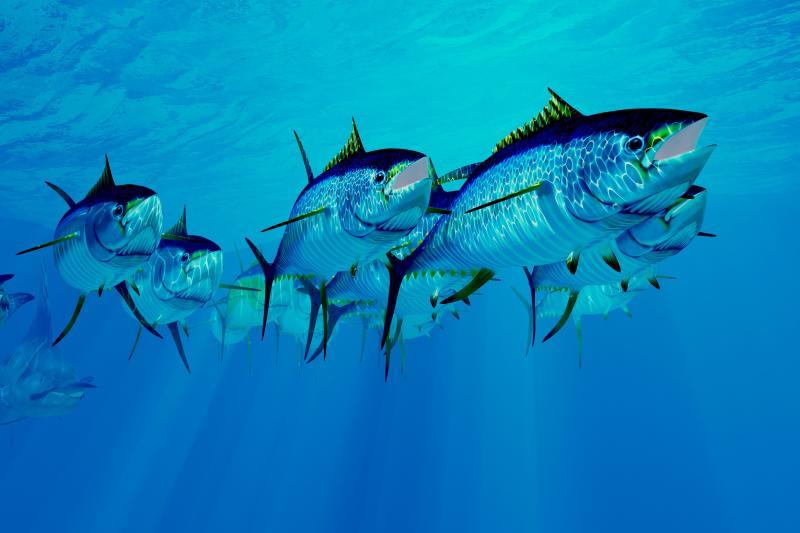
NOAA releases two key reports, status of stocks and fisheries of the United States
by NOAA Fisheries 20 May 2022 14:10 UTC

School of yellowfin tuna in the Atlantic Ocean © iStock
Today, NOAA Fisheries released two flagship reports—the 2021 Status of Stocks report and the 2020 Fisheries of the United States report.
"These reports help capture our shared and continued commitment to sustainable fisheries management in the U.S. as we continue to make progress in rebuilding and ending overfishing on stocks and work to increase the economic impact of our fisheries," said Assistant Administrator for NOAA Fisheries and NOAA's Acting Assistant Secretary for Oceans and Atmosphere, Janet Coit. "They also reflect the responsibility we have to understand and mitigate the impacts of climate change on our coastal and marine resources, all while trying to build healthier and more resilient ecosystems."
Status of U.S. Fisheries
Our annual Status of Stocks report highlights our collective efforts to rebuild and recover U.S. fisheries by providing a snapshot of the more than 460 stocks we manage. This year's report shows continued progress in science and management for U.S. fisheries.
A few highlights from the report:
- In 2021, U.S. fisheries held steady with more than 90 percent of stocks not subject to overfishing, and 80 percent not overfished
- The number of stocks on the overfishing list also held steady at 26, and the number of overfished stocks slightly increased to 51, up from 49
Fisheries of the United States
Our annual Fisheries of the U.S. report focuses on the economic impacts of fisheries. This year's report presents information using an exciting new digital format which helps engage readers in different ways—from those who favor graphics to those who want raw data.
A few highlights from the report:
- U.S. commercial fishermen landed 8.4 billion pounds valued at $4.7 billion, while recreational anglers caught an estimated 1 billion fish and released 65 percent of those caught
- Landings for fish in the U.S. were down 10 percent, likely due to the impacts of the pandemic
- Top ports for volume and value in 2020 were Dutch Harbor, Alaska, and New Bedford, Massachusetts, respectively
"The numbers presented in these reports highlight the work that our agency, the eight regional fishery management councils, and our stakeholders accomplished together to answer the challenge of Covid while ensuring the sustainability and economic stability of our nation's fisheries," said Coit.